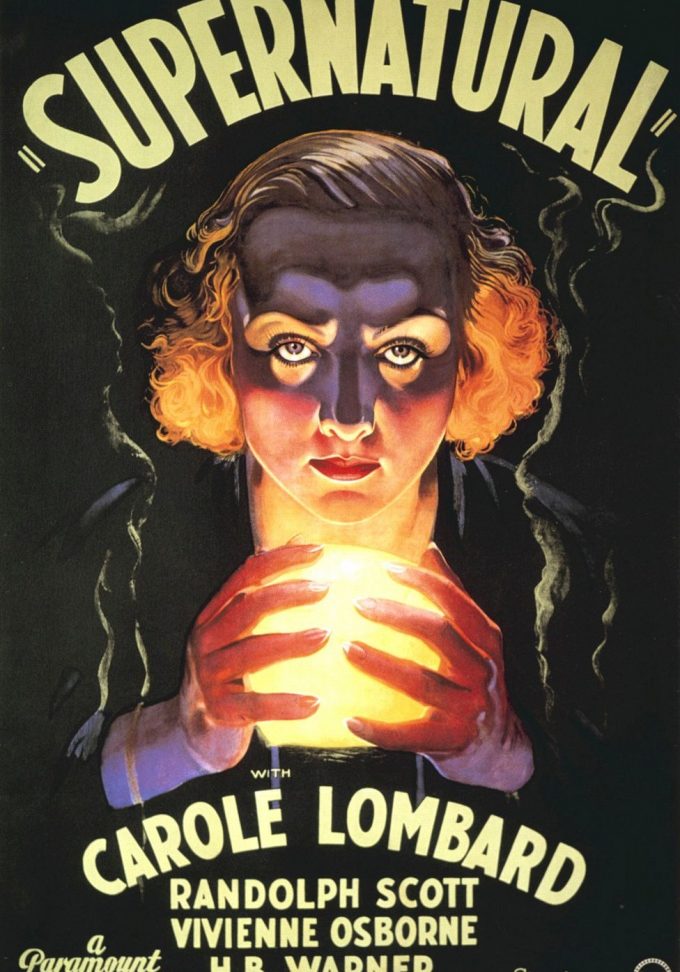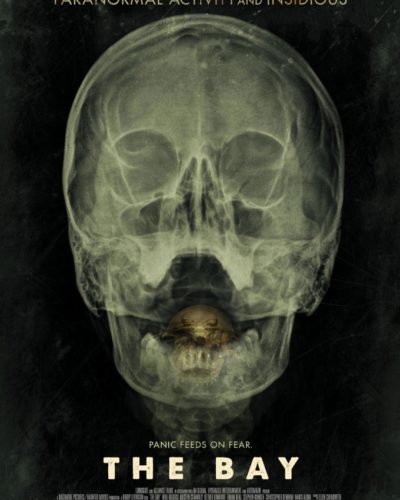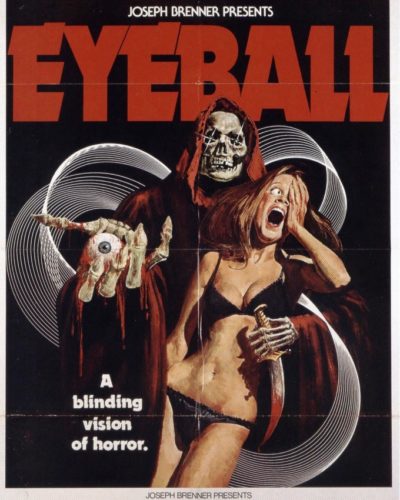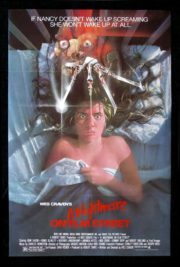The Whisper of Death: “Supernatural” Unearthed
“I’ve crossed eyes with Death… and he’s crossed eyes with me.” This chilling line from the 1933 horror movie “Supernatural” sets the tone for a journey into the eerie and uncanny. Directed by Victor Halperin, released just a year after his seminal work “White Zombie,” “Supernatural” unfolds as a gripping tale of possession and the occult. At first glance, the story follows Roma Courtney (Carole Lombard), a young woman who becomes entwined with a malevolent spirit following the death of her brother. Yet, as the narrative progresses, it becomes clear that the film is seamstress to a much more intricate tapestry of terror.
Chilling Elegance: Crafting the Macabre Mood
Atmosphere and Tone
“Supernatural” relies heavily on its atmosphere to invoke horror, much like the tendrils of a creeping fog. It does not assault the senses with gore or shock; instead, it builds a mood of dread and anticipation. The director, Victor Halperin, shows a deft hand at drawing out fear from the shadows, utilizing suspense and a profound sense of foreboding to unnerve the audience.
Cinematography and Visuals
The movie’s visuals are a testament to the golden era of black and white horror, with cinematography that conjures awe and terror. Artful lighting swathes actors in darkness at precisely the right moments, while the stark contrasts paint an almost gothic picture of menace. Camera angles are employed thoughtfully, often leaving much to the imagination and thus magnifying the horror. Special effects, though primitive by today’s standards, are novel for the time and add a layer of supernatural wonder unique to the period.
Soundtrack and Sound Effects
As integral as the shadowy visuals, the movie’s soundtrack, and sound effects are keystones in its horrifying arch. Eerie music and meticulously timed effects heighten each chilling scene. Moments of silence are potent—often preceding a frightful revelation or enhancing a sense of isolation and vulnerability.
The Puppeteers of Fear: Cast and Horror Mechanics
Performances
The characters are crafted with careful consideration for the shifting landscape of fear they inhabit. Our protagonist Roma, played by Carole Lombard, brings a nuanced performance that manages to bridge the gap between vulnerability and determination. The supporting cast is equally compelling. The believability of their terror helps to plunge the audience further into the story.
Horror Elements and Techniques
The film indulges in the supernatural vein of horror, common for its time, and uses a mix of psychological tension and spectral phenomena to lead its audience through a haunted narrative. It does not resort to gore; instead, it teases out fear through its characters’ experiences, a testament to Halperin’s understanding of true terror lying within the mind.
Thematic Undertones
Apart from its overt scares, the film touches on several profound themes, including the nature of life and death, and the thin line that separates them. It delves into grief and the desperate measures one might take to contact a lost loved one, providing a reflective surface for the audience’s own fears and experiences.
Legacy in the Shadows: Overall Impact and Audience
Effectiveness as a Horror Film
“Supernatural” stands as a horror movie which, while perhaps not teeming with the frightful intensity of modern horror, still musters a gripping, uncanny appeal. Its vintage charm and dedication to atmosphere make it a haunting watch, particularly for those enamored with the genre’s history.
Suggested Audience
This film will most enchant lovers of classic horror cinema and those with an appreciation for the subtler, more suggestive approach to genre that dominated the early 20th century. Casual viewers accustomed to in-your-face horror might find it tame, yet its historical significance cannot be denied.
Comparisons and Conclusions
When placed alongside other horror classics such as “Drácula” (1931) or even Halperin’s own “White Zombie,” “Supernatural” holds its ground with its unique atmosphere and psychological undercurrents. It may not have the same notoriety as these contemporaries, but offers a potent blend of the macabre and melodramatic.
The movie’s strengths are in its atmosphere, performances, and the director’s clever use of visuals and sound to conjure horror. However, its weakness may lie in pacing, which modern audiences might find sluggish. In terms of graphic content, the film is relatively tame by today’s standard—any warnings would pertain to its dark themes more than visual shock.
In conclusion, “Supernatural” is a noteworthy entry in the classic horror canon. It provides an atmospheric, thought-provoking experience that will no doubt appeal to connoisseurs of dread and darkness, as well as those curious about the roots of the supernatural subgenre. For those willing to cross eyes with Death, alongside the formidable persona of “Supernatural,” a fittingly eerie evening awaits.




